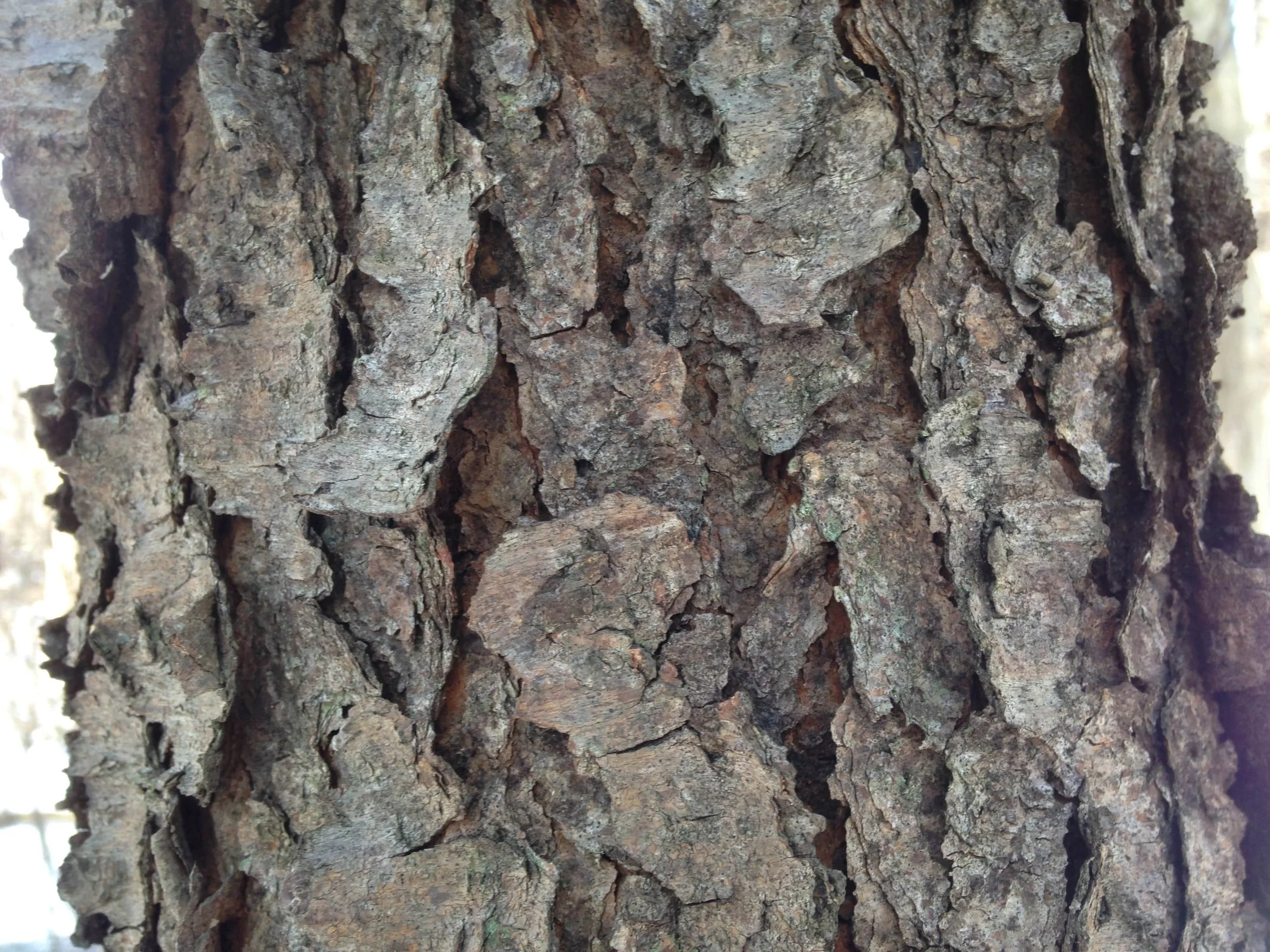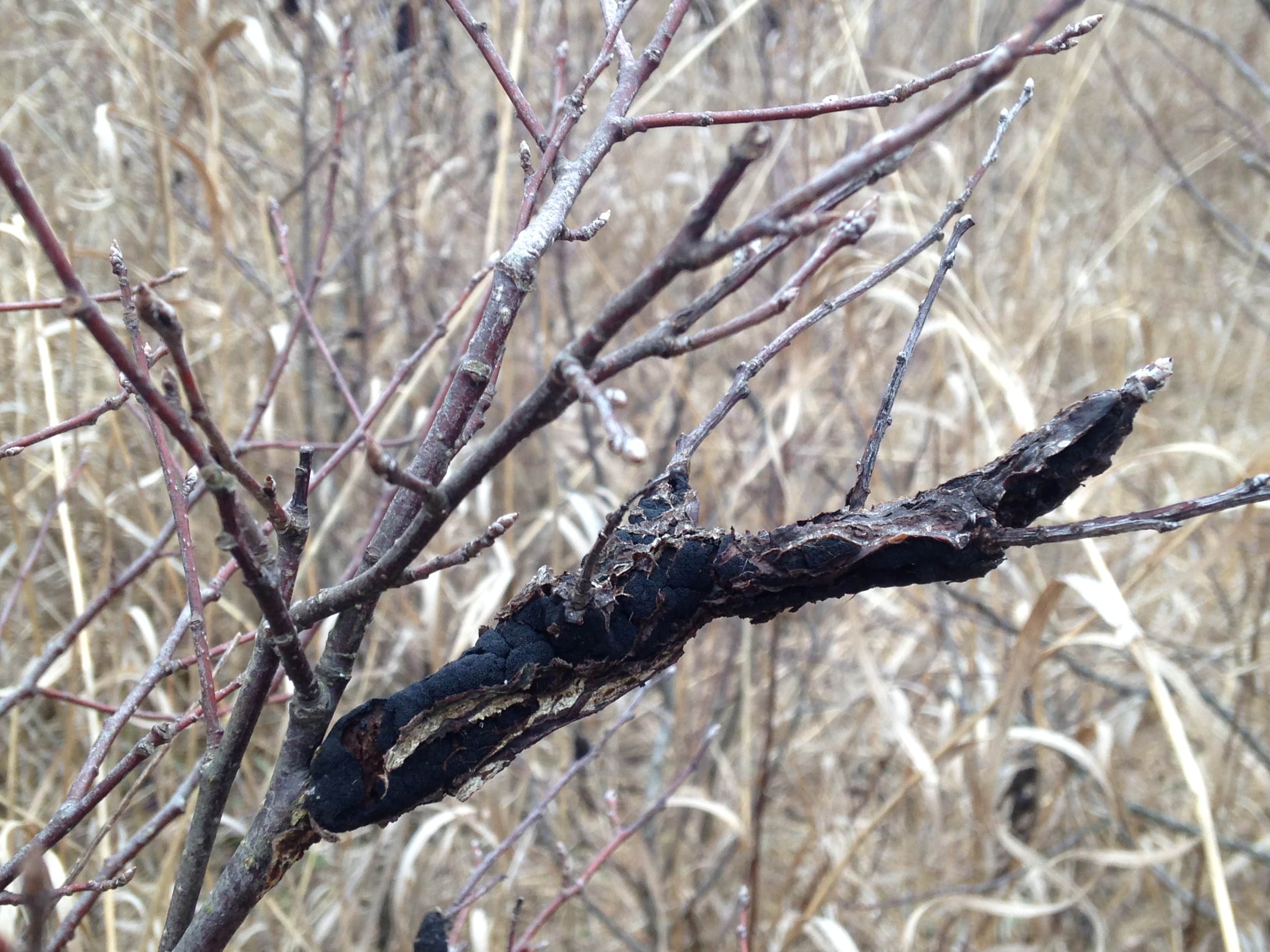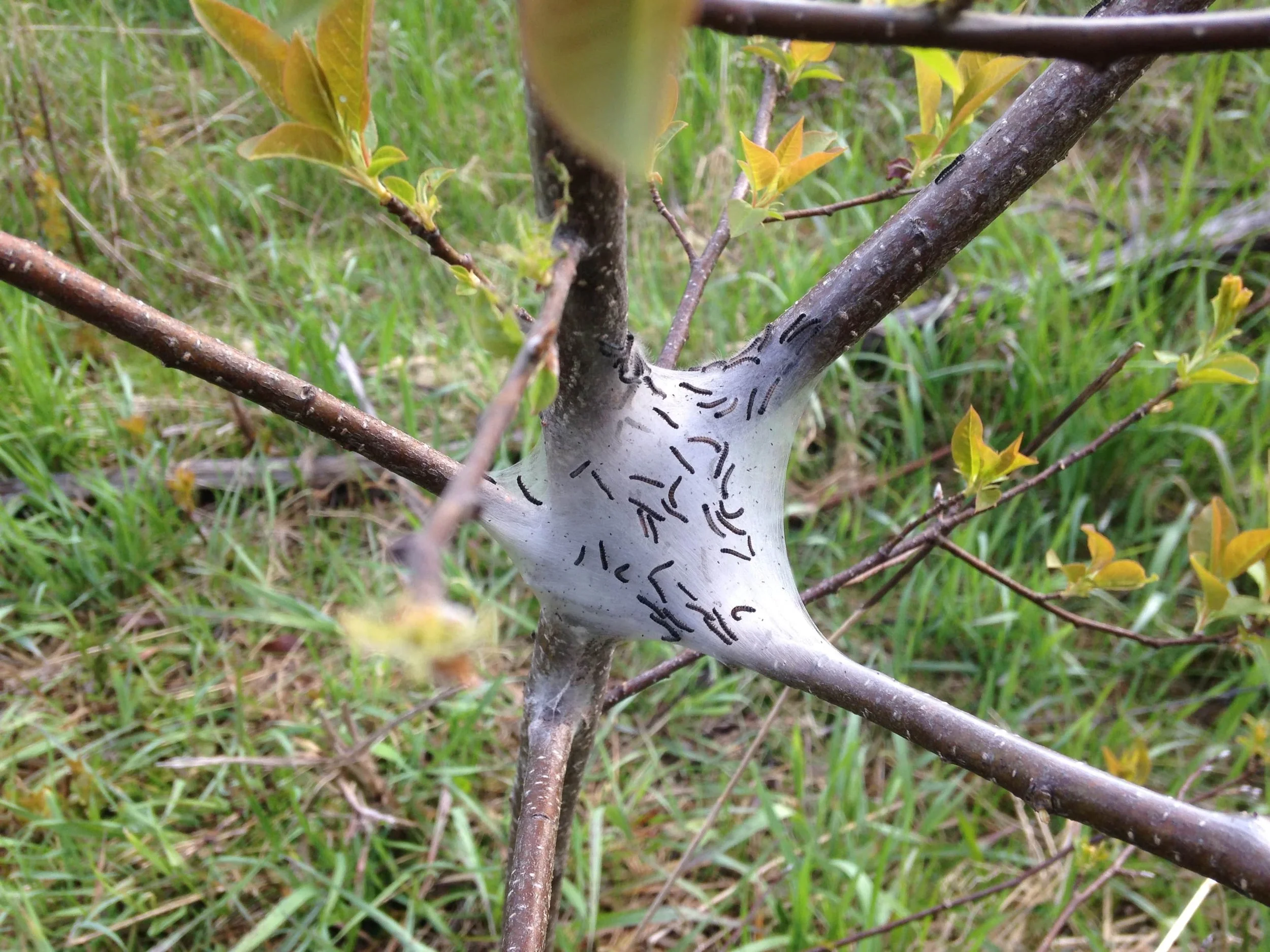Considering Chokecherries
In the previous post I mentioned that I had been watching a specific Chokecherry (Prunus virginiana, or the Anishnaabemowin name asasawemin) looking at Eastern Tent Caterpillar (Malacosoma americanum) egg masses and how the caterpillars had emerged. I ended up taking a closer look at the Chokecherry in the days following as my interest had been piqued.
Chokecherries are in the Rosaceae or Rose family, which are usually typified by having regular flowers with five sepals, five petals, a bunch of stamens and styles, and most often serrated leaves. This is a diverse family found throughout the world, though more species are in the Northern hemisphere. Rose family members are also mostly perennial. Chokecherry abides by all of these descriptors. Other Rose family members include Apples (Malus domestica), Hawthorn (Crataegus spp.), Raspberry (Rubus idaeus), Chokeberry (Aronia spp.), Serviceberry (Amelanchier spp.) and Mountain Ash (Sorbus spp.).
Chokecherry is also in the Prunus genus which is shared with American Plum (P. americana), Black Cherry (P. serotina), Pin Cherry (P. pensylvanica), and domestic Sweet (P. avium) and Sour (P. cerasus) Cherries.
All members of the genus contain amygdalin and prunasin, substances which can break down in water to form hydrocyanic acid (cyanide or prussic acid). While many older books and resources caution around these, newer sources suggest that with consideration, working with the bark and berries (the leaves we’ll get into later), medicinally or for food, should be safe. All things to consider.
Description
Habitat and Range : Found in mixed thickets, trail sides, dryer exposed sites as well as river banks, edges of woods and swamps, railroad embankments. The main ones I am observing lately are on trail sides, in mixed thickets, and in a dry exposed site adjacent to a river. Ranges from Newfoundland to British Columbia, South to California and North Carolina. Native.
Size and Form : Alternately branching suckering shrub or small tree up to 10 m tall though usually 2 - 3 m. Trunk 5 - 10 cm in diameter, branches smooth, with dark red to greyish brown bark with showy lenticels. Strong odour almond-like when scraped. Twigs have terminal buds. Chokecherry can live for 20 - 30 years.
Buds and leaf scar : Buds are a deep rich brown fading to pale at margins of bud scales.
Leaves : Simple, deciduous wide, sharp-toothed, egg shaped leaves with a hairless midrib. 4 - 12 cm long, 2 - 6 cm wide. Narrowing at the tip. Stalks .05 - 2 cm long with glands near the base of the blade.
Flower : Arranged in a long, drooping, dense cluster along a central stem at terminal end of branches. Flowers small, petals roundish and white.
Fruit : Dark red-purple cherry. See write up from my Fruit and Seeds pt. 2 blog post:
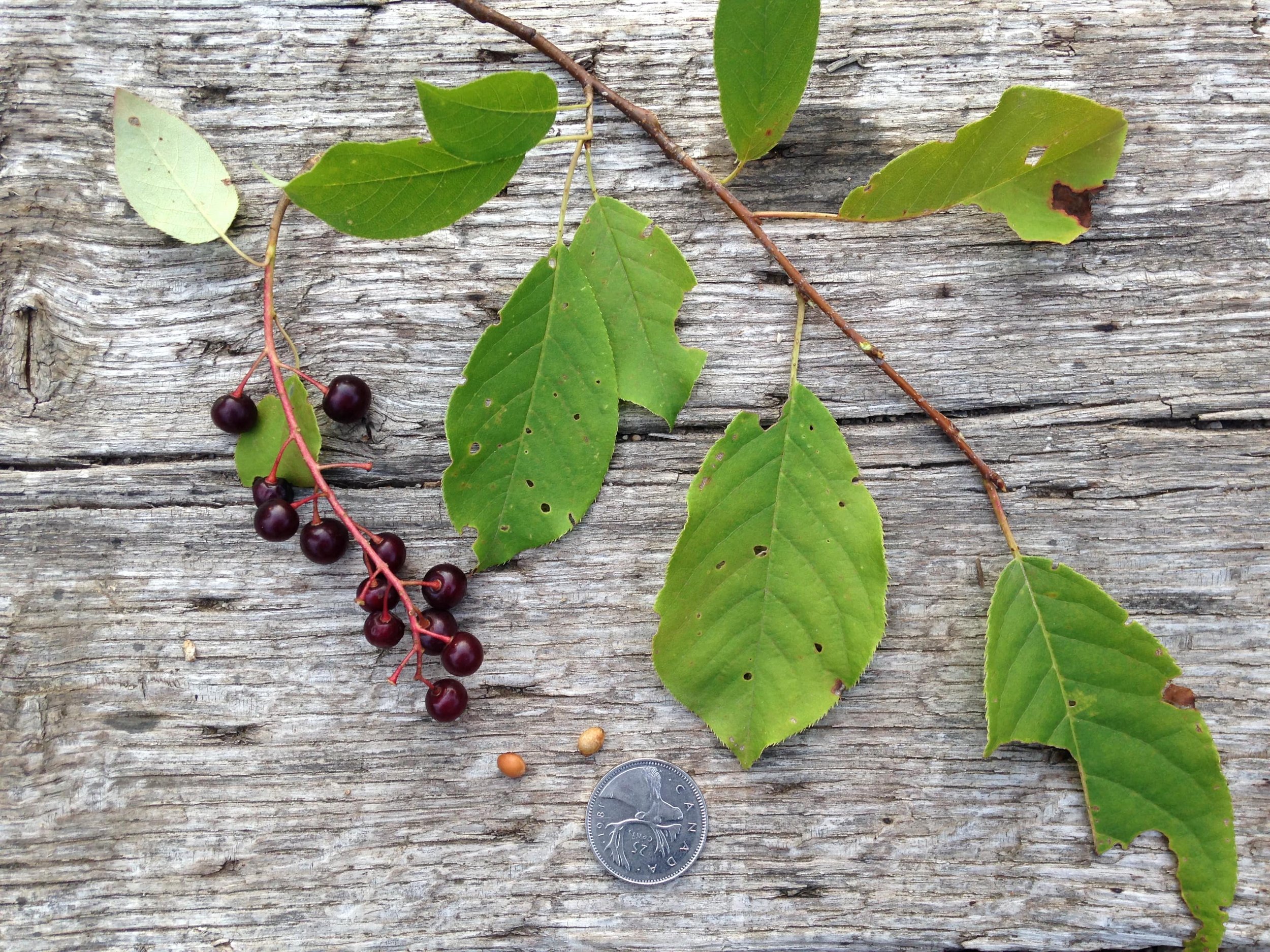
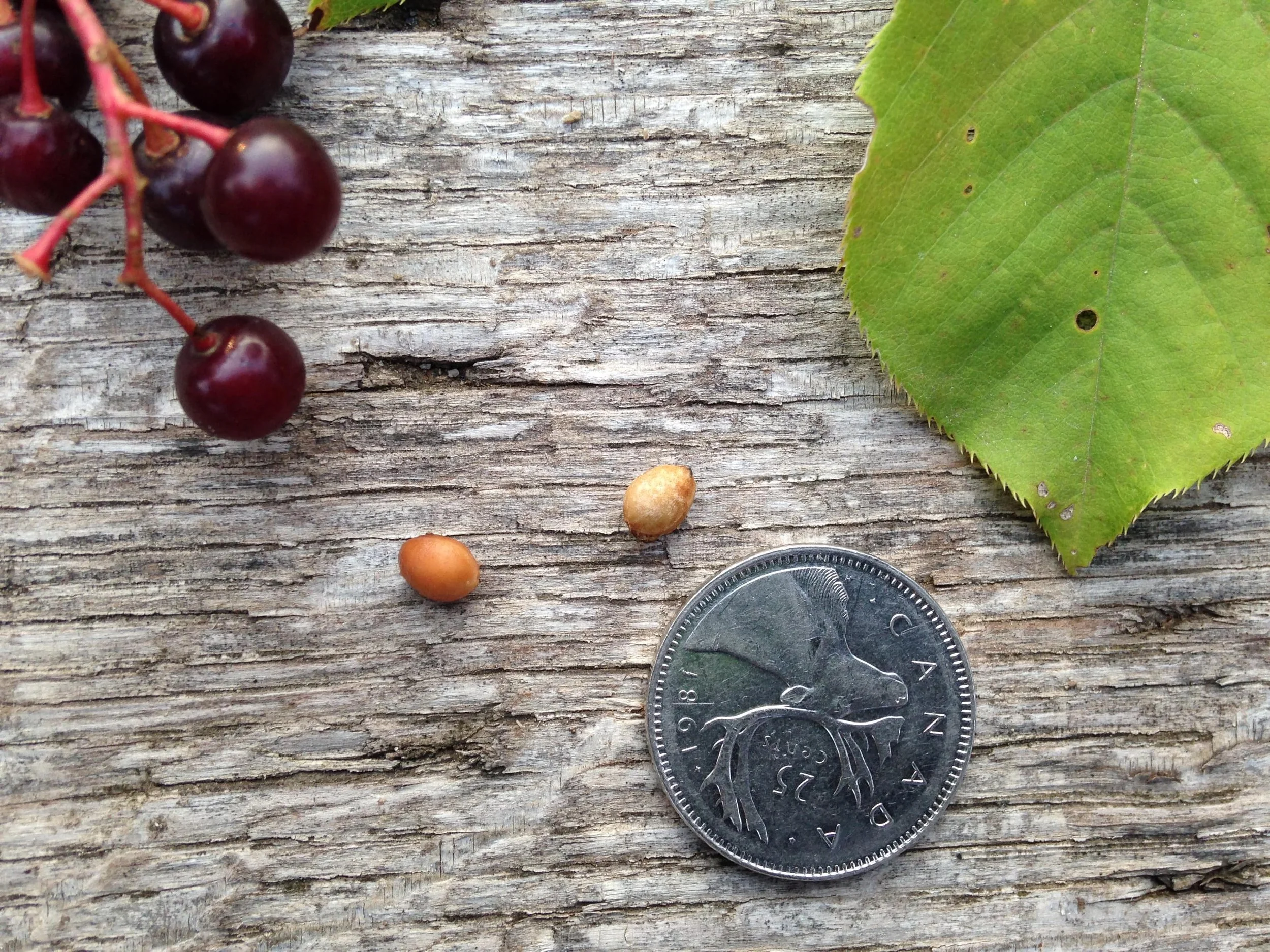
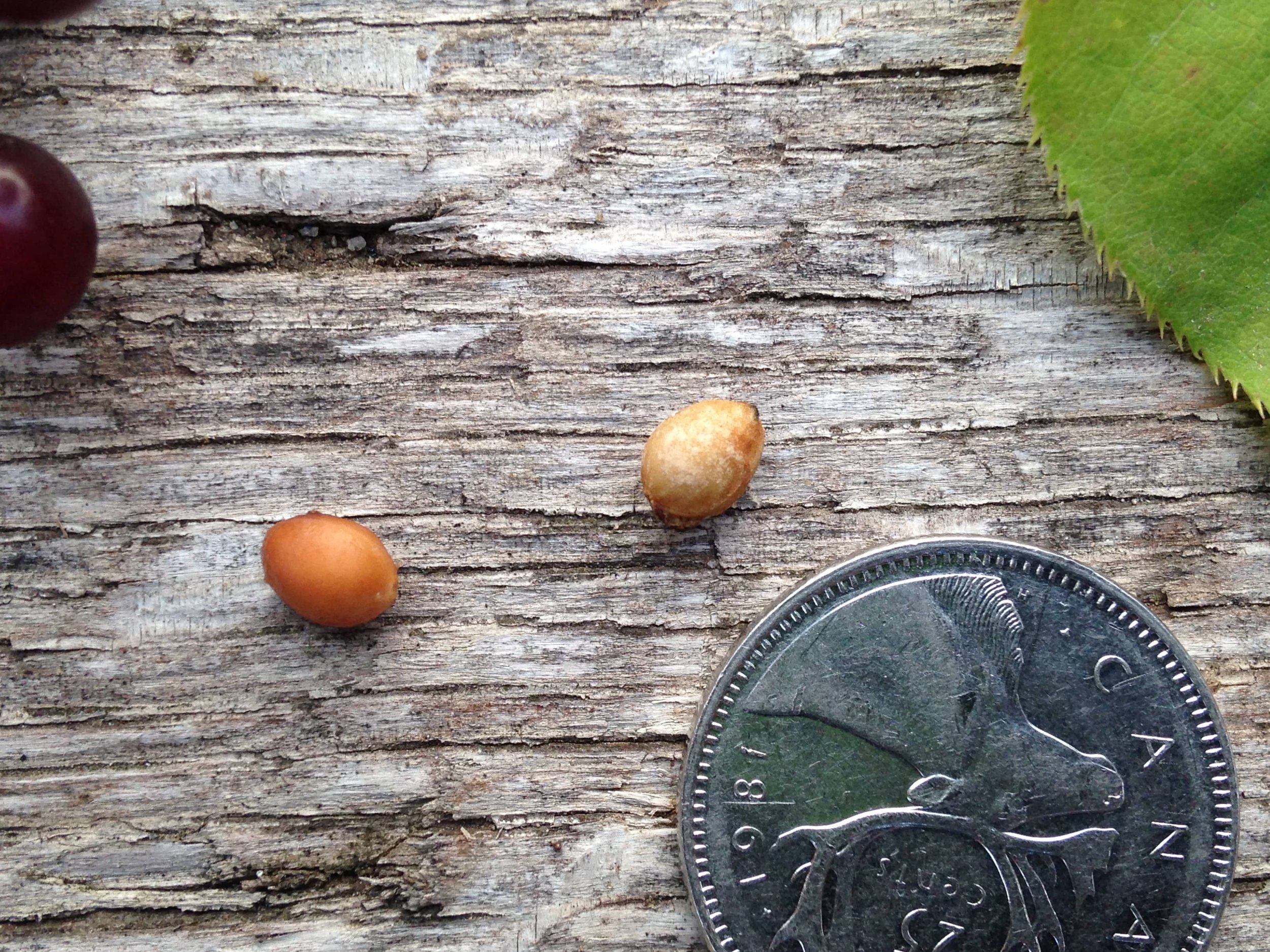
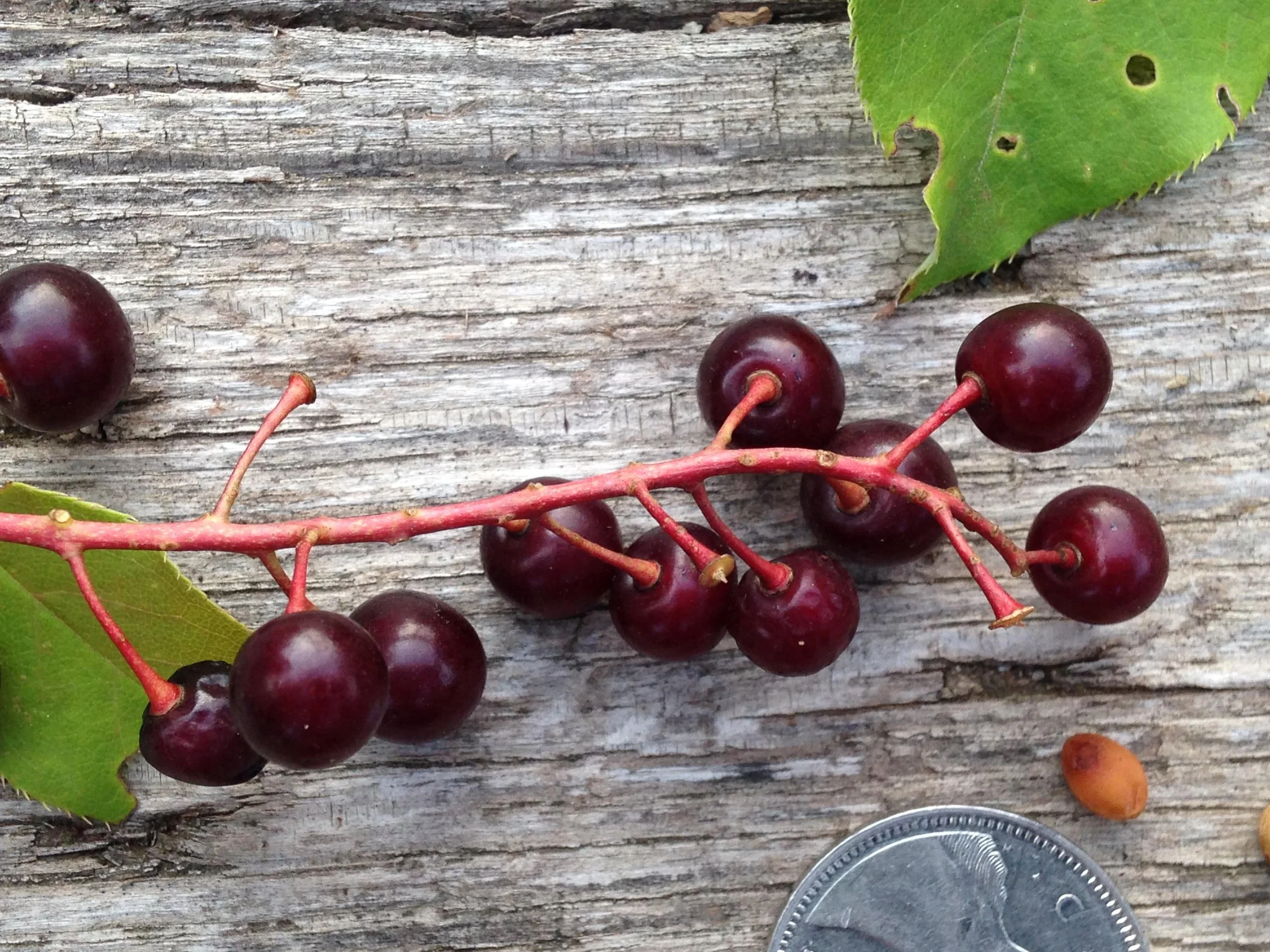

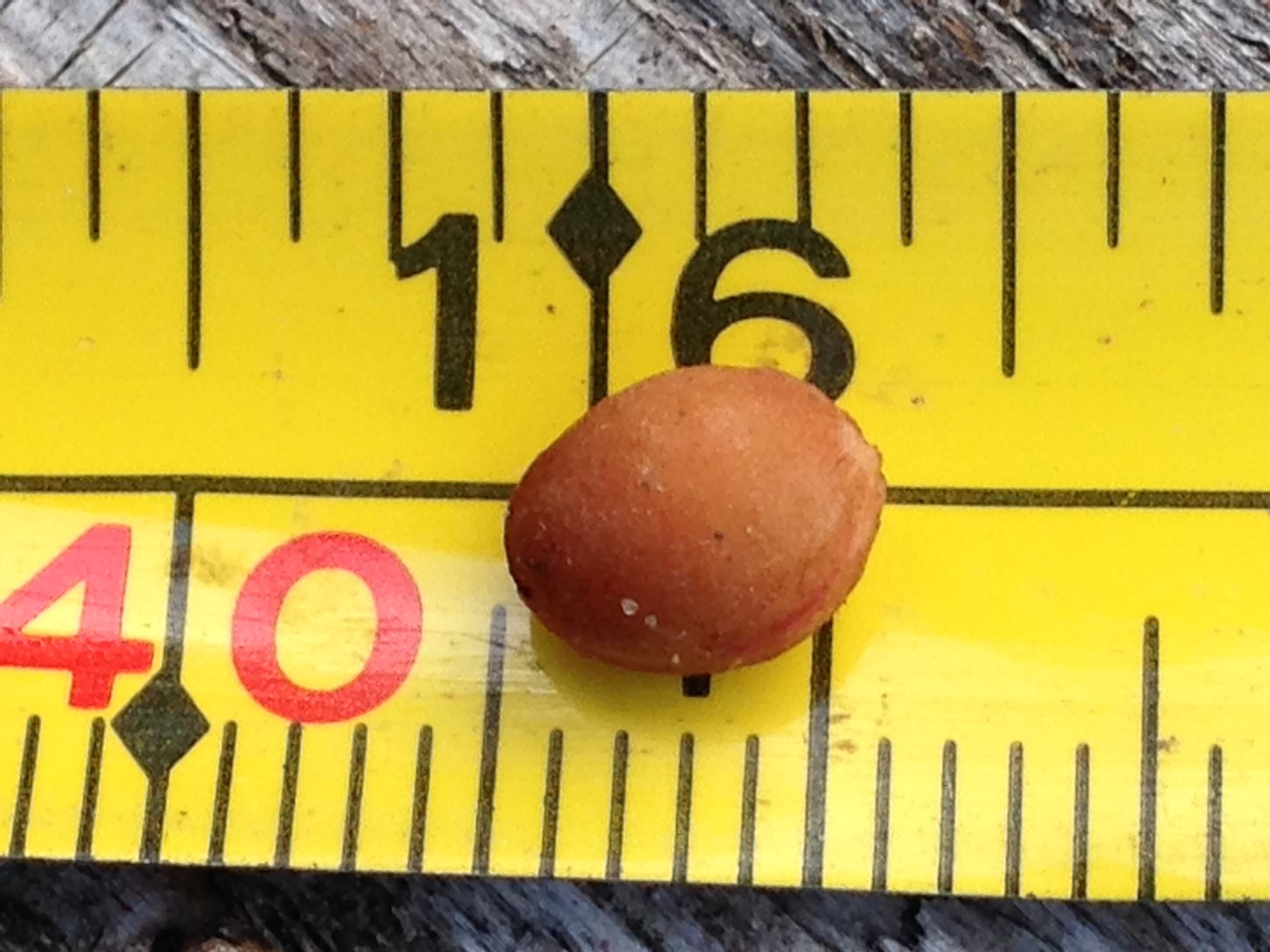
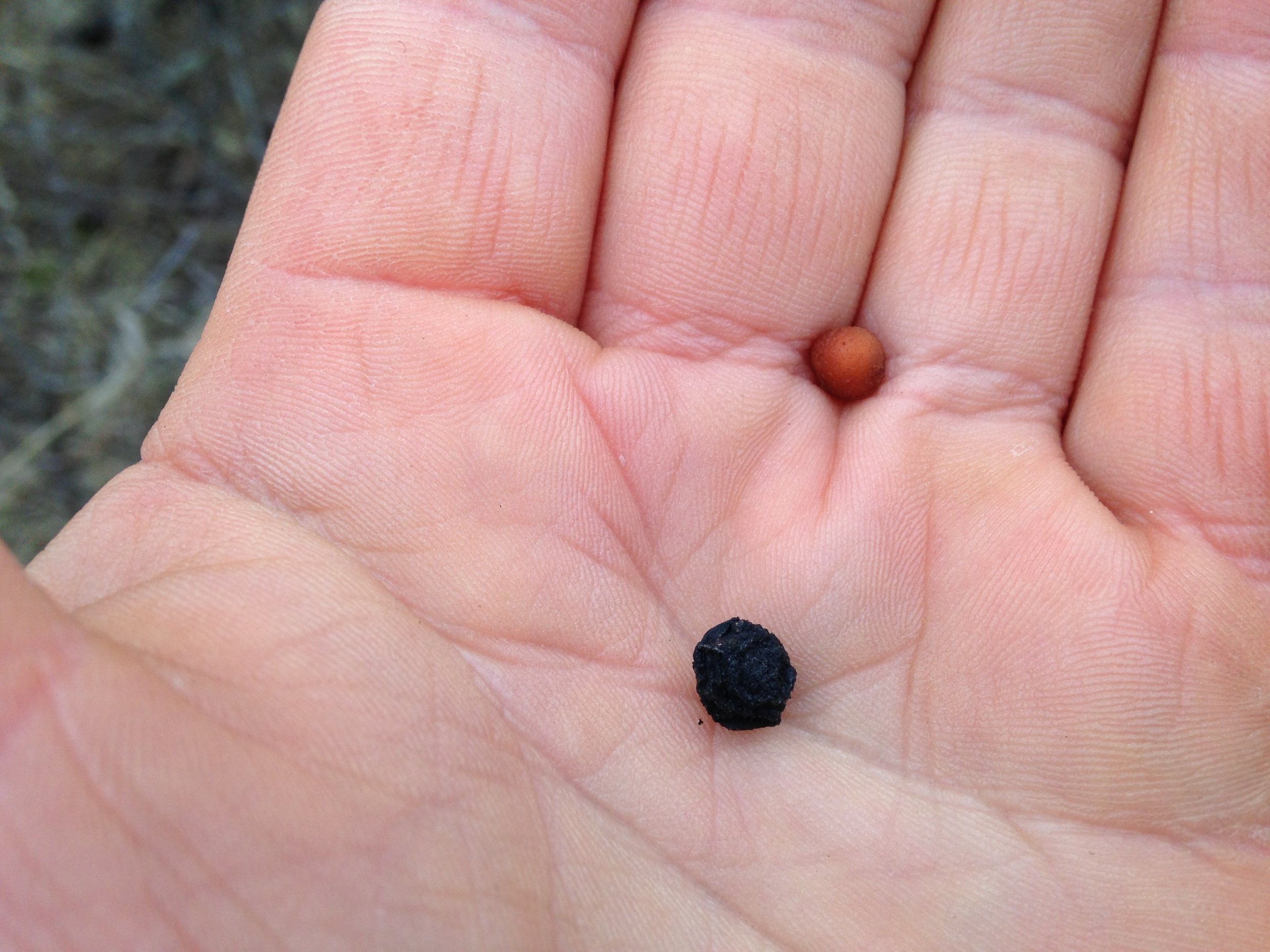



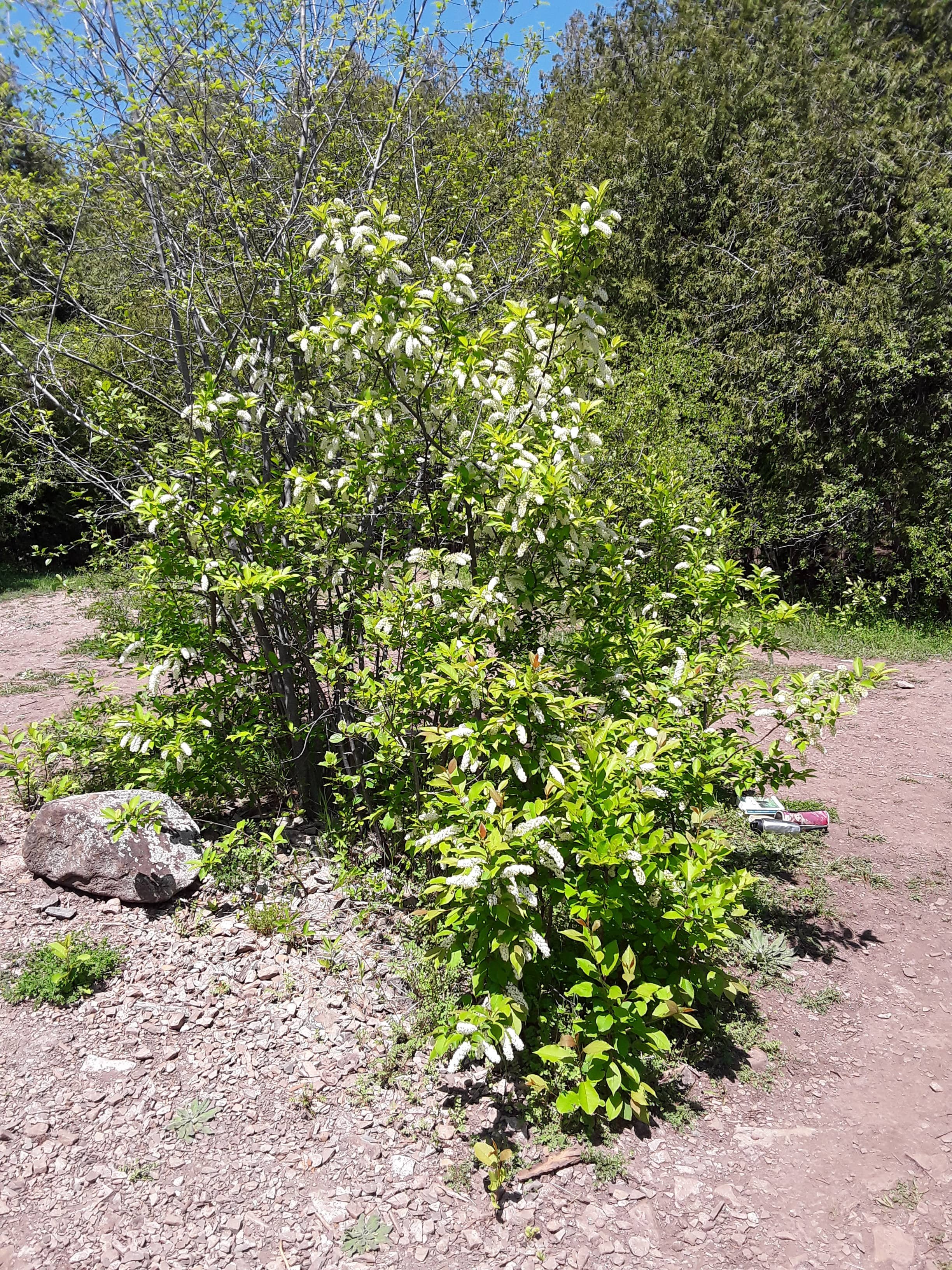
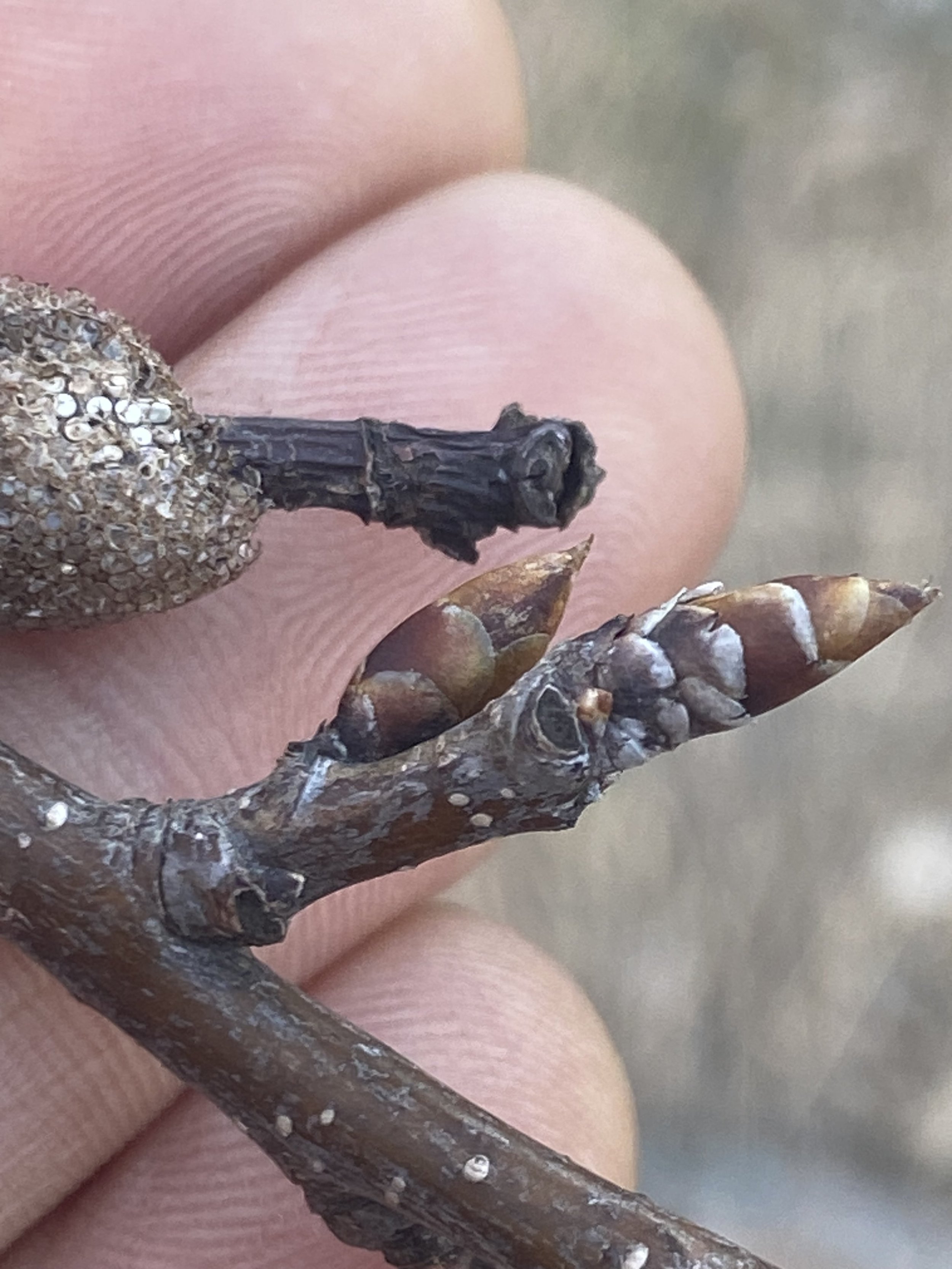
When is fruit ripe : Early August - September
Size of seed : ~5 mm long
General description of seed : Similar to a popcorn kernel, but slightly rounder and slightly larger.
Notes : Fruit is a drupe, as in the seed is contained within a hard shell surrounded by a fleshy exterior. Seeds, twigs and leaves contain building block compounds of hydrogen cyanide which is poison for many species including humans. Wilted or frosted damaged leaves especially demonstrate this poison quality. Photo with bare seed and dessicated fruit taken in January. Average about 11,500 seeds per kilogram.
Similar species : Black Cherry (Prunus serotina) can be confused with Chokecherry when it is young. They both have tubular flower clusters (inflorescence) of similar shape and size though the Black Cherry inflorescence are loose clusters, while the Chokecherry are dense clusters.
Both species leaves are toothed and tapering, but the Black Cherry leaf is widest below the middle, has a longer tip with rounded teeth, while the Chokecherry broadest above the middle, has sharp teeth and is more oval in form. The Black Cherry leaves also tend to have whiteish to rusty coloured hairs growing along ¼ to ½ of the midrib of the leaf, while the Chokecherry does not. When mature the Black Cherry can reach heights of 22 m (72 feet), and have flaky bark appearing like “burnt cornflakes”, while the Chokecherry usually grows up to 2 - 3 m (6. - 9.8 feet) and rarely to 10 m (32.8 feet)
Mature Black Cherry bark
Mature Chokecherry bark
Ecosystem Function
Drought, heat and fairly cold tolerant and somewhat salt tolerant, Chokecherry is an ideal species to be reclaiming disturbed lands amidst climate change. The USDA describes Chokecherry as “an excellent shrub for providing thermal cover and erosion control in fisheries”. Roots of Chokecherries may extend down into the soil about 1.8 m (6 feet) or more, and horizontally may spread to 10.6 m (35 feet) or more. A thicket of Chokecherries may be a single plant (genet), which has sent up many aerial stems (ramets), emerging from their shared root network, appearing as many different individuals though they all share one root system and genetic make up.
Another Prunus species, Pin Cherry (Prunus pensylvanica), which also acts as an early inhabitant in disturbed/cleared areas is known to accumulate nitrogen, potassium and magnesium along with other nutrients, and since it has a short life span, then returns these nutrients to the soil which can now support more diverse life.
I have been observing areas where the Chokecherry has been growing quicker, spreading faster than the Common Buckthorn (Rhamnus cathartica), taking up space and not letting it go. This could be an area of future research in quelling the spread of Buckthorn on Turtle Island/North America.
Propagation
Chokecherry can be grown from seed either by direct sowing in the fall or by cold stratification at 1 - 3° C for three months and then sown in Spring. They can also be propagated by root suckers. Younger saplings transplant readily by digging them up in the Spring.
Prolifically sprout from cut or fire damaged stumps.
Ecological interactions
Chokecherries have many connections with the wider world around them. Here are a couple of them.
Black-knot Fungus, taken at Bishop Mac, 2023.01.22
Black-knot Fungus (Apiosporina morbosa), which looks like scat got stuck on a twig while an animal was trying to eat the cherries. The texture along the surface of the fungal growth appears rough, but a very fine rough, similar to fine grade sandpaper. Fungal spores spread in Spring, landing on new growth and then getting in under the bark. Once the infection starts to grow, a gall appears in the area. This gall is generally the same colour as the plant tissue. The fungus grows within the gall and these galls start to get bigger by the following spring. The fungus then bursts out, splitting the bark. The fungus initially has a kind of light brown to olive greenish colour, but turns black and brittle as it ages. The fungus ends up girdling the branch and the limb dies. These fungal knots can become home to some insects, especially Peach Tree Borer Moth (Synanthedon exitiosa). The fungus doesn’t really kill the tree, but can lead to windbreak due to weakened limbs, and may hinder fruit production if the infection is extensive enough.
I have identified Cherries and other members of the Prunus genus by using the fungal infection as a clue. Black-knot is unlikely to kill wild Chokecherry, but may be more harmful to cultivated “Shubert” varities.
Eastern Tent Caterpillar, taken along Eramosa River Trail, date unknown
Eastern Tent Caterpillar (Malacosoma americanum) often infects the shrubs and signs of this insect can be found year round. Egg masses are laid by mid-Summer by the adult female moth (hairy looking, light brown, ante medial and post medial lines are “cream coloured” along the forewings, 15 - 24 mm long, fly late Spring to latter half of Summer). These egg masses can contain between 150 to 400 eggs, but usually more like 200. The female seems to then excrete a brown foamy mass which hardens to this beautiful water resistant varnish where the eggs overwinter. I have read that the first instar develops within the egg during the rest of the warm season, and then overwinters inside the egg. Caterpillars hatch from these egg cases in the first few warm days of Spring, that’s about 9 months after they were originally laid. They then begin feeding on buds and newly emerging leaves of their host. Its seems like a week after hatching is when they start building their webby nest in the crotch of the host tree where they will congregate and continue feeding, defecating, growing, and molting. After about six weeks they begin a pupation process which lasts another three weeks. When the adults emerge, they mate, and lay more eggs on the preferred host plants, and the cycle continues.
Chokecherry Finger Gall Mite, taken along Eramosa River Trail, 2023.05.21
Chokecherry Finger Gall Mite (Eriophyes emarginatae) is a tiny mite (of the Eriophyidae family) which nibbles on Chokecherry leaves. The interaction between the saliva of the mite and the chemicals in the leaves create tiny club shaped growths on the upper side of the leaf. The female enters the gall and lays between 50 - 60 eggs. The galls then split later in the season, males and females mate and then the females overwinter in older buds near the base of the branches. The galls that these mites create may become simultaneously occupied by another mite, Eriophyes prunidemissae. Do they fight it out? Do E. prunidemissae predate on the E. emarginatae? I don’t know - I couldn’t get access to the paper.
E. emarginatae can be found on American Plum (Prunus americana), Canada Plum (P. nigra), European Plum (P. domestica), Sand Cherry (P. pumila), Bitter Cherry (P. emarginatae) and Chokecherries. Galls develop from April - July. The E. emaginatae mite is robust, wormlike, and whitish or yellowish brown and measures about 240 microns long, so unless you have access to an electron-microscope, we aren’t going to see one. At least we can check out the galls.
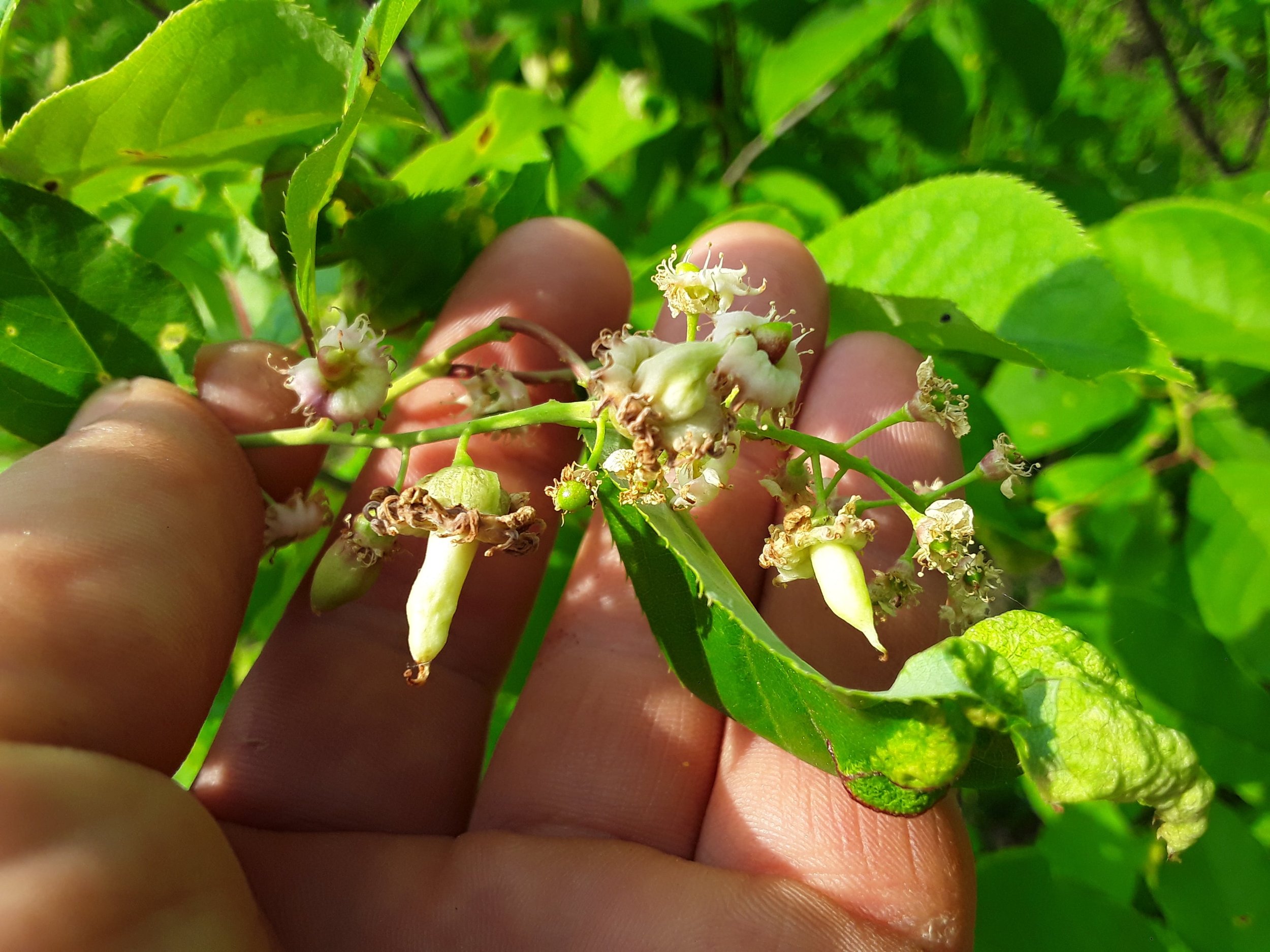
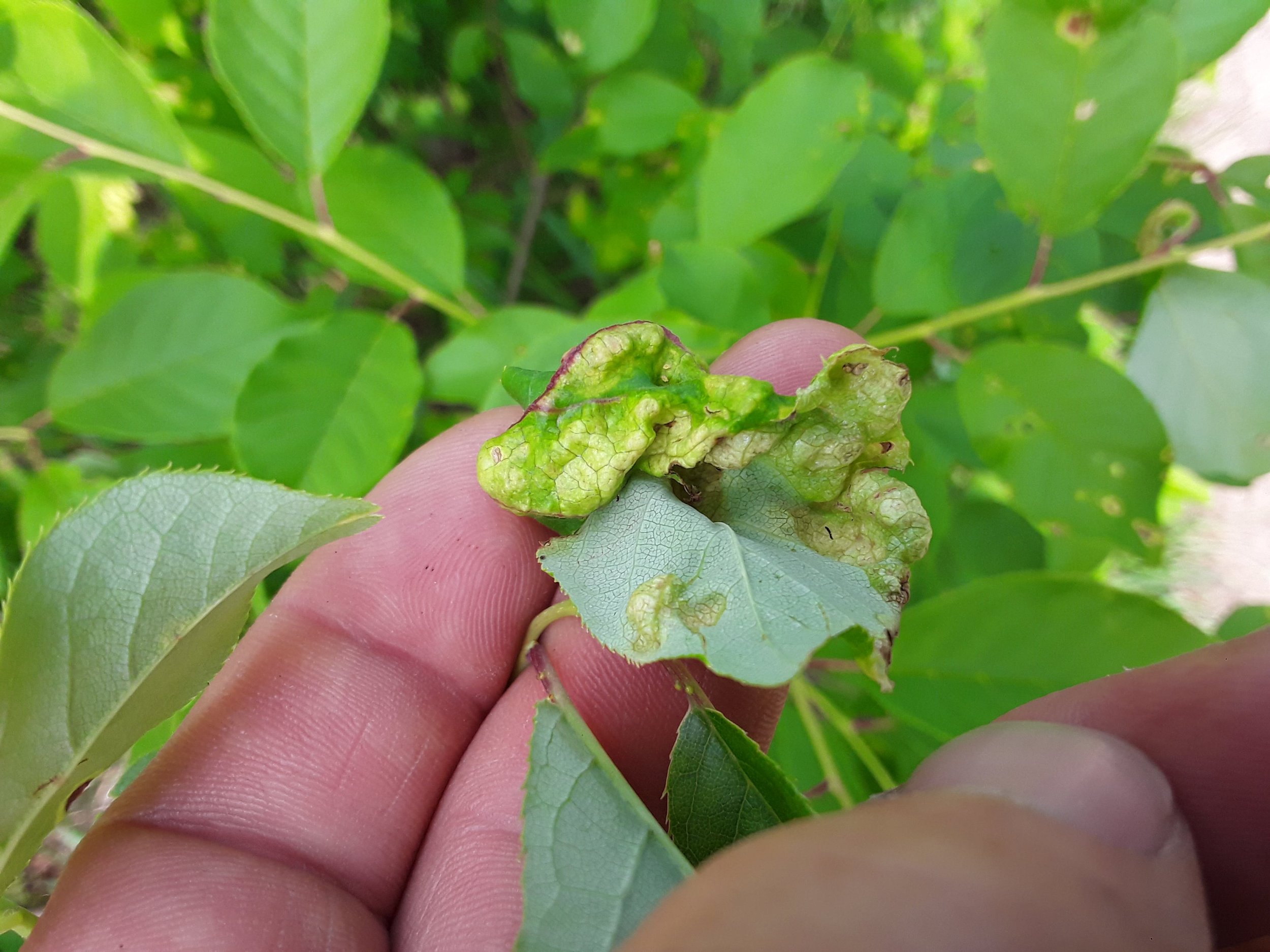

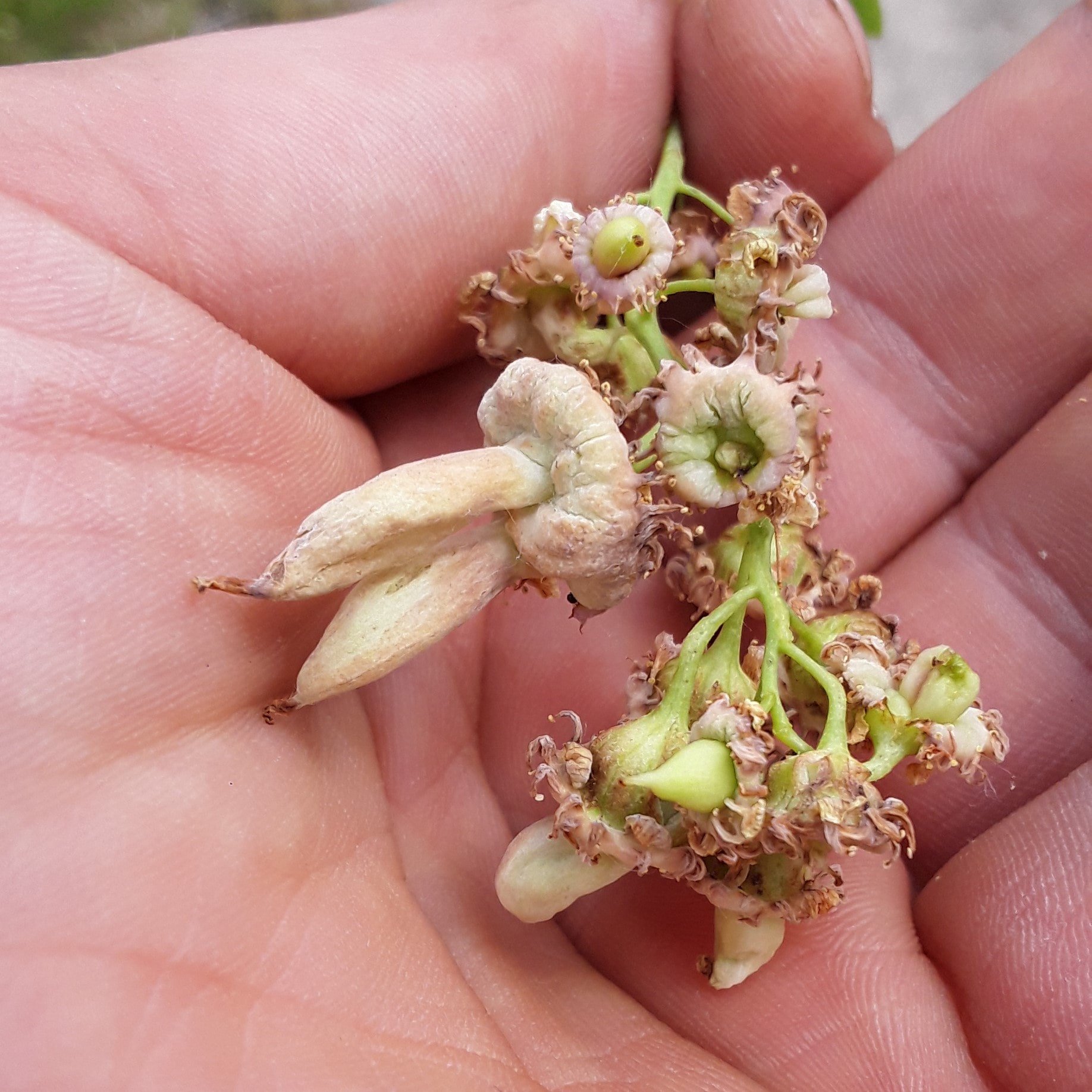
Taphrina confusa - are in the Taphriniceae family of dimorphic fungi that are hosted on a few different forb, shrub and tree species around the world. They produce both a yeast state and a filamentous state. They can cause all sorts of deformations, but many seem to be similar, to my untrained eye. Some other Taphrina species can induce leaf curls, fleshy pockets (like Taphrina padi - which looks very similar to T. confusa though it has different hosts), blisters, and Witches Brooms and a few other forms. The fungi overwinters on the plant host in buds or on twigs, and then emerges in the warming wet Spring to infect fruit, flowers, catkins and leaves.
In the case of the flowers, first the anthers and ovary start to swell up, then the anthers flip backwards, then the anthers will inevitably breakdown and disintegrate. I hope to observe the galling process on the leaves.
Cherry Leaf Spot (Blumeriella jaapii) causes small purple spots on the leaves. Later, the spots turn brown, separate from the green tissue, and drop off, leaving a “shot hole”. Eventually, the infected leaf turns yellows and falls off. (Blumeriella jaapii) causes small purple spots on the leaves. Later, the spots turn brown, separate from the green tissue, and drop off, leaving a “shot hole”. Eventually, the infected leaf turns yellows and falls off.
Here is a short list of bird species who feed on Chokecherries in Southern Ontario :
Ruffed Grouse, Wild Turkey, Eastern Bluebird, Northern Cardinal, Grey Catbird, American Crow, Northern Flicker, Great Crested Flycatcher, Rose-breasted Grosbeak, Blue Jay, Eastern Kingbird, Baltimore Orioles, American Robin, Yellow-bellied Sapsucker, White-throated Sparrow, European Starling, Scarlet Tanager, Wood Thrush, Veery, Eastern Towhee, Red-eyed Vireo, Cedar Waxwing, and Hairy, Pileated, Red-bellied Woodpeckers.
Some mammals who feed on Chokecherries in Southern Ontario :
Black Bear, Beaver, Red Fox, Snowshoe Hare, Opossum, Eastern Cottontail, Raccoon, Striped Skunk, Grey and Red Squirrels, Eastern Chipmunk, Peromyscus Mice, Meadow Vole, White-tailed Deer, and Moose to the North.
Many small mammals will hoard and store P. virginiana seeds, allowing potentially poisonous compounds to deteriorate over time before consumption.
As for Insects who visit the shrub :
Too many to list. Go outside and look yourself.
Data from U.S. Department of Agriculture
Edible or Medicinal Uses
qualities including notes on how to gather/prepare:
Chokecherries are a great trail side snack. You can collect them by pulling off the main stalk of cherries from the twig, and pop them individualy in your mouth, and suck off the fleshy outer covering. Be sure to spit out the pit though, as raw pits contain prussic acid, otherwise known as hydrogen cyanide, and should not be consumed. I have read of methods to remove the prussic acid, but have never attempted it, so I don’t know how effective it is, so won’t write about it. The leaves and twigs also contain prussic acid so they should be avoided in large quantities.
Turner and Szczawinski (1988) suggest that those with patience to remove the pits could make a delicious pie, and are also used for jams, jellies and syrup (the latter I have done to good success). Thayer (2006) says that many authors disregard Chokecherries as marginal fare, but he (and I) disagree… you just have to harvest them at the right time. When you harvest them early they do leave a bit of a pucker in your mouth due to the astringency of the berries (they constrict the tissues in the mouth, pulling out the moisture, making the mouth feel dry), but if you harvest them in late August, when they are dark, maybe a purple-black and not really red anymore, they tend to be sweeter. A touch of cold on them also makes them sweeter.
While there are no main entries on the Chokecherry in most of my books, many do indicate that Chokecherry is used medicinally in similar fashion to Black Cherry, though Wood (2009) describes Chokecherry as singularly astringent and Black Cherry as sedative. Bitter, astringent, drying and cooling are some of the qualities attributed to Chokecherry. These qualities then make it useful in contexts of heat, dampness, and inflammation. Rosenbaum (2023) states that the bark of Chokecherry can be used as a respiratory relaxant and antispasmodic (something the suppresses muscle spasms). Jim Mcdonald in his fantastic monograph on the wild cherries writes that P. virginiana is “a cooling sedative to lung tissue, [and] excels when heat and irritability undermine healthy expectoration.”
Craft Uses
I have read from one source that red and grey dyes can be produced from the berries, and a green from the leaves and Spring bark. I have not yet tried this.
Additonal Notes
Chokecherry is a role model. How can we be in good relationship with so many different life forms, transform degraded and barren anthropogenic landscapes in preparation for new life? Yes, there is a note of caution to be had, an awareness of potential hazards, but the overall theme of this shurb appears to be regeneration, repair and creating spaces for life to flourish again.
To learn more :
Shrubs of Ontario by James H Soper and Margaret L. Heimburger. ROM Life Sciences Publications, 1982.
Botany In A Day by Thomas J. Elpel. HOPS Press, 2006.
USDA Fire Effects Information System species profile on Chokecherry
Chokecherry Finger Gall Mite from Minnesota Seasons
The phytophagous and predatory mites (Acari) on Prunus (Rosaceae) in southeastern Canada
The Biology and Morphology of Eriophyes emarginatae, a Prunus Finger Gall Mite, and Notes on E. prunidemissae
An Illustrated Guide to Plant Abnormalities Caused by Eriophyid mites in North America - pdf
Edible Wild Fruits and Nuts of Canada by Nancy J. Turner and Adam F. Szczawinski. Fitzhenry & Whiteside, 1988.
The Foragers Harvest by Samuel Thayer. Foragers Harvest, 2006.
The Earthwise Herbal by Matthew Wood. North Atlantic Books, 2009.
Wild Cherry (P. serotina & P. virginiana) monograph by jim mcdonald
American Wildlife & Plants : A Guide to Wildlife Food Habits by Alexander Martin, Herbert Zim, and Arnold Nelson. Dover, 1951.

